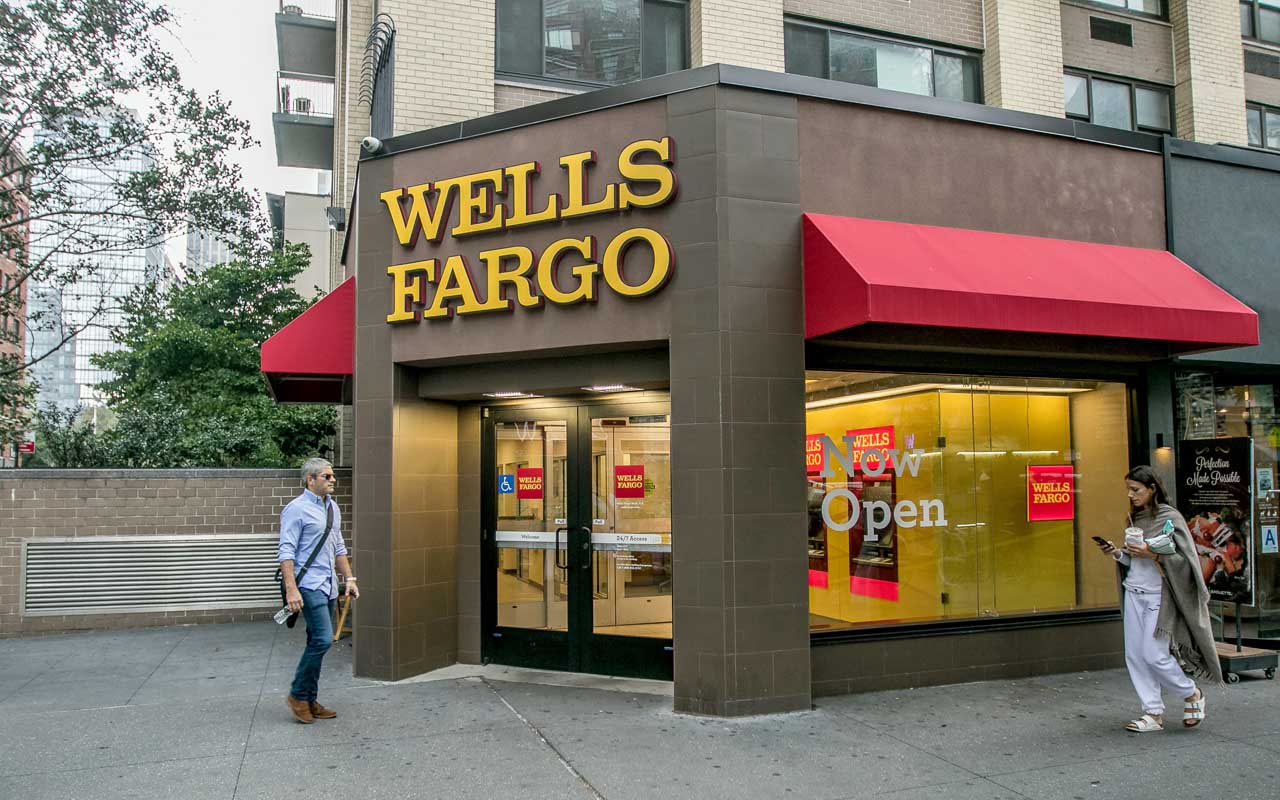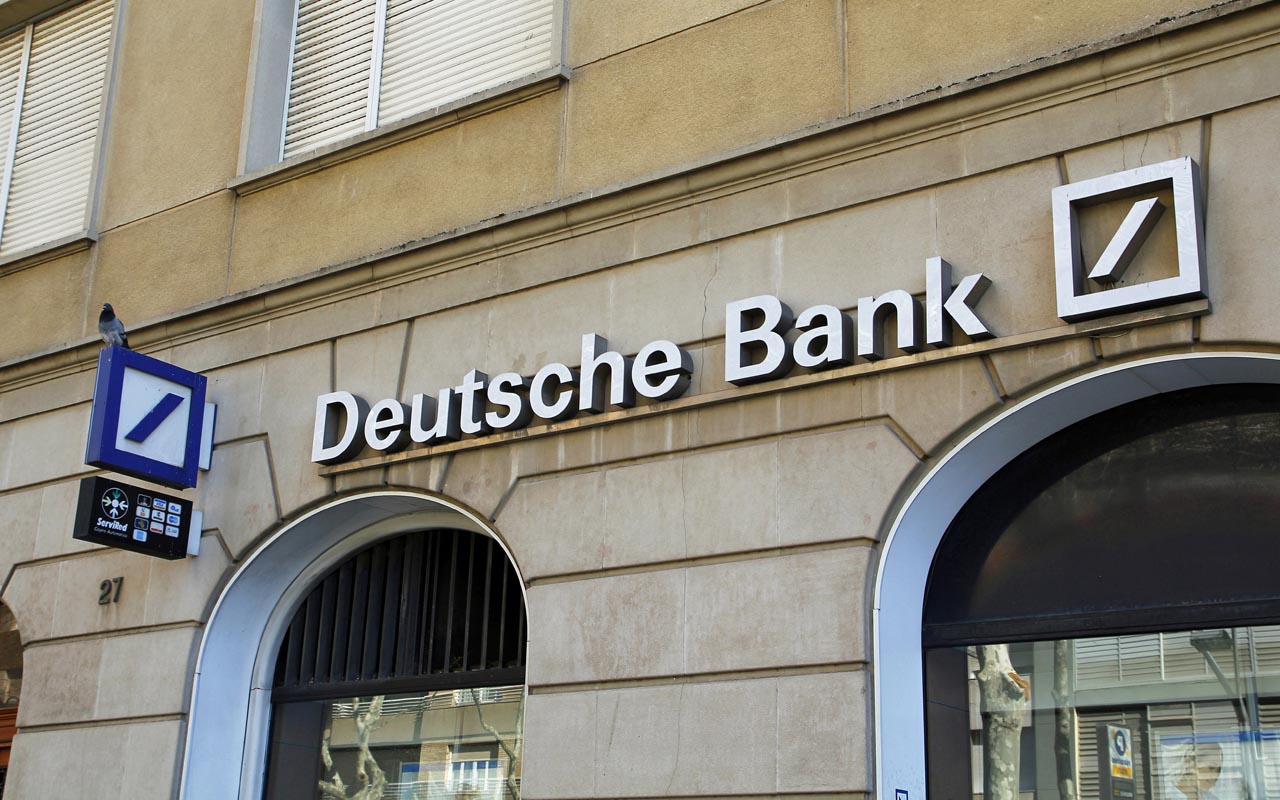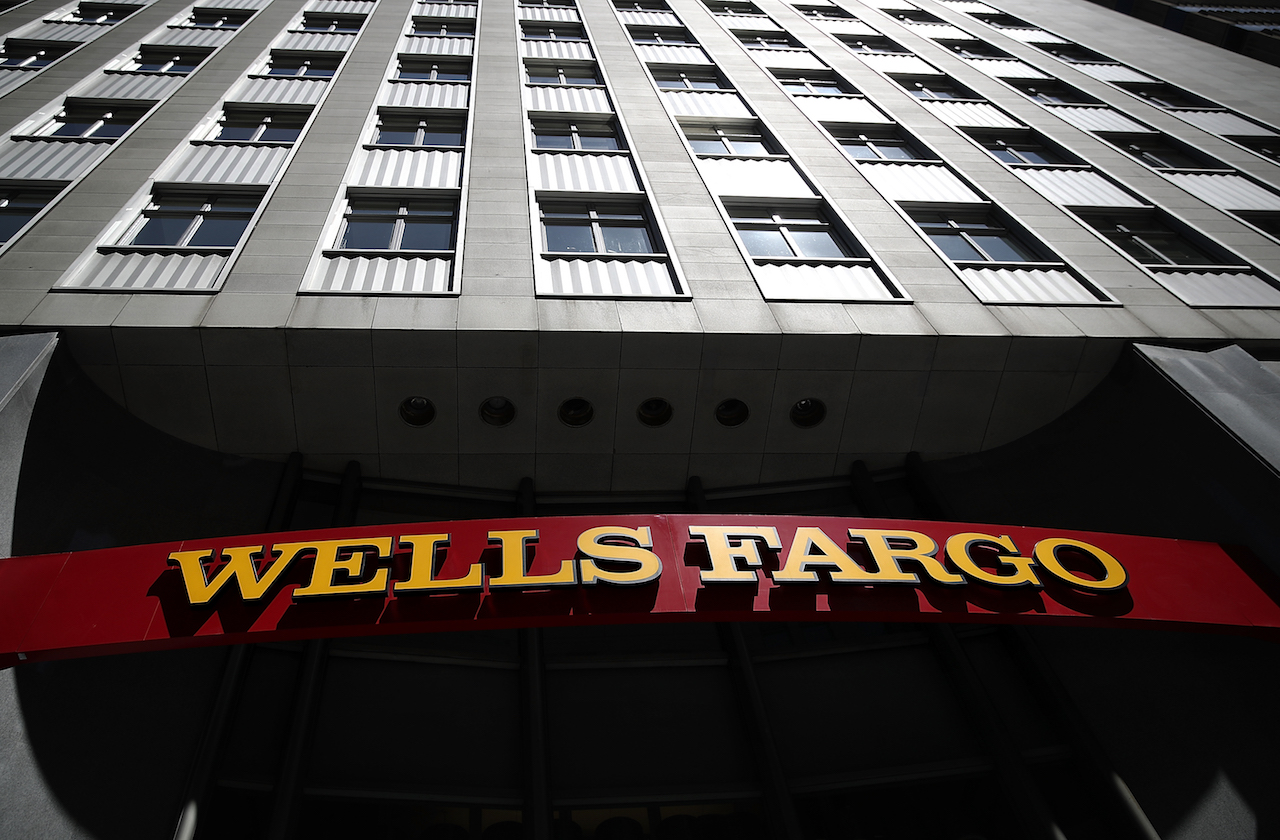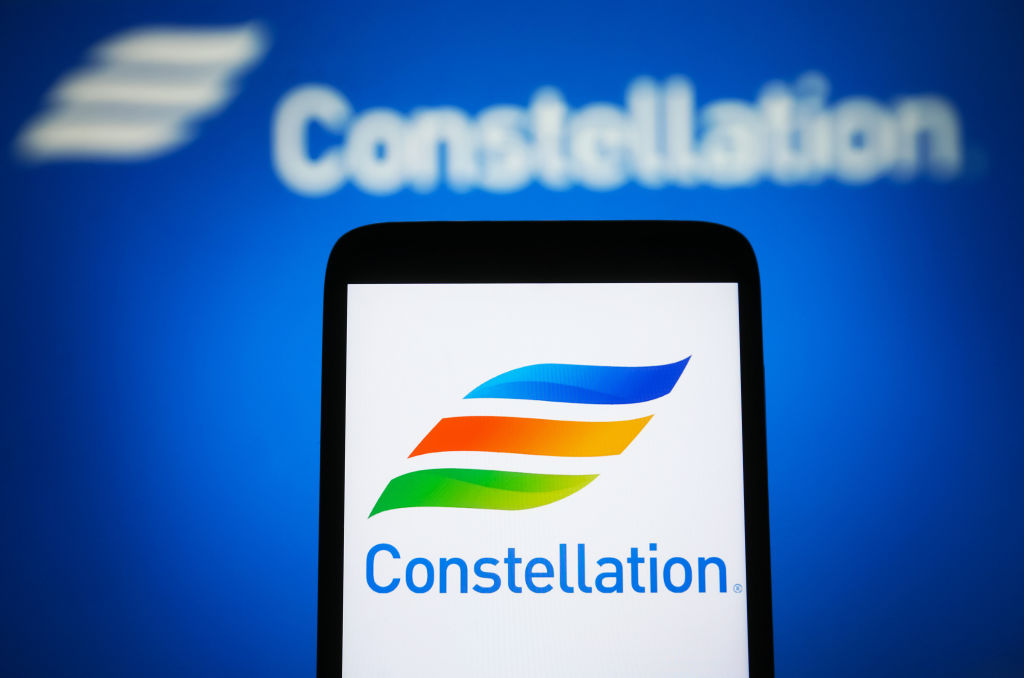The Pros Say No: 7 Large-Cap Stocks to Sell or Avoid
Volatile markets can sometimes drive investors into the assumed safety of large-cap stocks.


Volatile markets can sometimes drive investors into the assumed safety of large-cap stocks. But a warning: Not every big company can help you weather the storm.
September is a notoriously difficult month for the stock market. That’s without considering the current risks related to the ongoing U.S.-China trade war, or flashing recession signals, or other economic hurdles popping up around the globe.
“The global macroeconomic picture continues to show fragility,” writes Northern Trust Wealth Management CIO Katie Nixon. “We expect overall growth to trend lower under the weight of growing trade uncertainty.”
While investors might find shelter in big, blue-chip companies, you must be able to tell the difference between high-quality large caps and simply high-market-value large caps. The pros are here to help.
Here are seven large-cap stocks to sell or avoid, according to Wall Street analysts. TipRanks, which collects ratings from roughly 15,000 Wall Street analysts, has honed in on a list of companies that are well-known but not particularly well-loved right now. We’ll look into just how bearish sentiment is, and why the experts say you should avoid some of them, and boot the rest if you own them.
Disclaimer
Data is as of Sept. 5. Stocks listed in reverse order of upside/downside potential, as calculated from analysts’ consensus price target.

General Electric
- Market value: $76.9 billion
- TipRanks consensus price target: $9.81 (11% upside potential)
- TipRanks consensus rating: Hold
Embattled multinational General Electric (GE, $8.81) looked like it was finally stabilizing for most of this year. However, a recent report alleging accounting fraud “bigger than Enron” – a controversial one that some analysts are skeptical about – rattled prices over the past month.
In August, investigator Harry Markopolos – the whistleblower that helped blow open Bernie Madoff’s Ponzi scheme – accused General Electric of accounting fraud worth $38 billion, which GE categorically denied. He alleges there are accounting issues in GE’s long-term care insurance unit and Baker Hughes oil-and-gas unit, among other points.
Deutsche Bank’s Nicole DeBlase is among the analysts who are skeptical about the report’s doomsday tone. “We find some of its arguments to be weak while others are plainly incorrect,” she writes, adding, “We find ourselves in the unenviable position of having to defend the reserve adequacy of a business about whose future claim projections we have very deep concerns.”
Still, General Electric has more problems than most large-cap stocks, with or without the report. Several analysts have GE among their stocks to sell as a result.
For instance, JPMorgan’s Stephen Tusa (Underweight, equivalent of Sell) described the company’s recent Q2 earnings report as “low quality.” He made the call despite GE’s earnings beat and instructed clients to sell into strength. Results reflect that “the company may have fewer options than many think, forcing a protracted, drawn-out approach to the problems, a negative given cycle timing, and at odds with the message of urgency from last fall,” he writes.
Gordon Haskett’s John Inch reiterated his Underperform rating (equivalent of Sell), calling the earnings “a modest step backward versus expectations.” Analysts also said the departure of CFO Jaime Miller, after less than two years in the role, is a worrying signal for investors. “We wonder about all these things, especially if things really are looking up, as management contends,” comments Gimme Credit analyst Carol Levenson, who also rates GE at Underperform.
And despite the 11% upside implied by the current consensus price target, recent ratings aren’t encouraging. Over the past three months, three analysts say GE is a Buy – while six say Hold and three more say Sell. Get the full scoop on General Electric’s analyst consensus at TipRanks.

Tesla
- Market value: $41.1 billion
- TipRanks consensus price target: $245.62 (7% upside potential)
- TipRanks consensus rating: Moderate Sell
Controversial auto stock Tesla (TSLA, $229.58) has lost almost a third of its value since the start of 2019. And Wall Street doesn’t think a significant turnaround is coming anytime soon.
Tesla’s current price target implies single-digit upside, but based on all the ratings received over the past three months, TSLA is actually a Moderate Sell consensus. While seven analysts are on the Buy side, six say Hold and 14 have advised investors to abandon ship. The latter camp includes CFRA’s Garrett Nelson, who downgraded the stock from Sell to Strong Sell and lowered his price target from $150 to $135 (41% implied downside).
The most recent wave of bearish ratings were sparked by Tesla’s poor second-quarter financial report. Auto revenue came in 4% below consensus expectations. Non-GAAP (Generally Accepted Accounting Principles) were 19.2% well below estimates for 20.5%. “Not a lot to like,” writes RBC Capital’s Joseph Spak. “Softer (gross margins) with an unclear path to see them higher, larger loss than expected, vaguer guidance and CTO departure.”
Spak reiterated his Underperform rating with a $190 price target (21% downside), calling current assumptions “too high.” In an ominous note, he adds, “We see TSLA entering a period that won’t screen well for growth.” Despite CEO Elon Musk indicating that the third quarter will be breakeven and that the company will generate a profit in Q4, Spak doesn’t see profitability until 2021.
UBS analyst Colin Langan and Needham’s Rajvindra Gill have similarly bearish opinions. Langan reiterated his Sell call with a low $160 price target following earnings, writing, “Second-quarter results support our view that Tesla will not be profitable in the mid-term … we remain cautious on deliveries and margins in the second half, as well as Model S/X weakness.” Gill, who also has TSLA among his stocks to sell, chimed in, “We are cautious on Tesla’s ability to fulfill these goals as the ramp requires a significant snapback in the second half of 2019.” Discover more TSLA insights from the Street at TipRanks.

Kraft Heinz
- Market value: $32.4 billion
- TipRanks consensus price target: $29.90 (2% upside potential)
- TipRanks consensus rating: Hold
Large-cap stocks in the consumer staples space are considered among the safest plays in a volatile market. But the Street’s message on Kraft Heinz (KHC, $29.30) is clear: steer clear.
Shares have cratered 37% this year. In the past three months, Kraft – a rare whiff for Berkshire Hathaway (BRK.B) CEO Warren Buffett – has received only Hold and Sell ratings over the past three months. Its last Buy rating came in March.
Why? The company unleashed a horde of issues in February when it announced its fourth-quarter results. Earnings and revenues missed expectations, but those were only mild concerns. Kraft Heinz also said it had to write down $15.4 billion worth of value in brands such as Oscar Mayer and Kraft. It cut its dividend. It also announced that the SEC was investigating one division’s accounting practices. Later this year, CEO Miguel Patricio withdrew full-year guidance, saying there was “significant work ahead” to get back on track.
Credit Suisse analyst Robert Moskow reiterated his Undeperform rating on KHC shortly after the latter development, with his $26 price target implying 13% downside from current prices. “While we appreciated CEO Patricio’s promises for more ‘straight talk’ with the Street, we view the decision to withdraw 2019 guidance as a tactical error,” he writes. More transparency is needed, not less, Moskow says – especially after the company’s recent SEC investigation.
Moskow advises caution here. “Meat and cheese cost inflation is about to get very challenging, retailers are reducing their inventory on Kraft’s brands, and the company is in the early stages of evaluating more investments in capabilities to return to sustainable growth.” These issues suggest further downward revisions ahead, he writes.
Guggenheim’s Laurent Grandet reiterated his Sell rating near the end of August “given the enormity of the task ahead and the uncertainty around the ultimate success of a potential turnaround.” This bearish call came with a price target of just $25 and a warning that “Kraft Heinz will need to rebase and over-invest starting next year, sell assets, and further reduce the dividend.” See why other top analysts are worried about KHC.

Wells Fargo
- Market value: $209.8 billion
- TipRanks consensus price target: $48.22 (1% upside potential)
- TipRanks consensus rating: Hold
Despite reporting a recent headline earnings beat, Wall Street is taking a cautious approach when it comes to Wells Fargo (WFC, $47.62) – perhaps unsurprising given the number of scandals Wells has compiled over the past few years.
Wells Fargo reported second-quarter earnings of $1.30 per share, which included a $721 million gain on the sale of $1.9 billion in Pick-a-Pay PCI loans. Excluding this item, core EPS turned out to be just $1.17, marginally topping the $1.16 consensus estimate.
Net interest income (essentially the difference between interest collected on products such as mortgages and interest paid out on products such as savings accounts) slipped by $446 million year-over-year to $12.1 billion, missing the Street’s $12.2 billion estimate. Net interest margin – a key indicator of a bank’s profitability and growth – dropped to 2.82% from 2.93% in the year-ago period.
“Though WFC has one of the premier banking franchises in the U.S., the company reported a lackluster quarter,” writes five-star RBC Capital analyst Gerard Cassidy. “The company had weaker-than-expected 2Q19 performance and guided net interest income toward the lower end of its previously disclosed range for 2019 and backed away from $1-2 billion reduction in 2020 expenses relative to 2019’s level.”
The higher expense guidance prompted Macquarie’s David Konrad to downgrade the stock. “We are downgrading WFC to Neutral given higher expense guidance driving a 12% cut in our (2020 estimates), leaving a valuation now at a 5% premium to (Bank of America),” he writes.
Wells Fargo has suffered five downgrades in five months, with Wolfe Research and Atlantic Equities also knocking WFC down to Sell-equivalent ratings. What are other financial experts saying about WFC’s outlook? Find out now on TipRanks.

FactSet Research Systems
- Market value: $10.5 billion
- TipRanks consensus price target: $263.00 (4% downside potential)
- TipRanks consensus rating: Moderate Sell
The widest swath of analyst moves are to reiterate previous ratings, so it’s always worth keeping watch over downgrades and upgrades. In the case of financial data firm FactSet Research Systems (FDS, $273.84), the stock has been hit by lowered ratings from both Goldman Sachs and Morgan Stanley. Overall, over the past month, the firm has received just six ratings: three Holds, and three Sells.
The $263 average price target suggests a modest pullback of 4% over the next 12 months, which itself is worrying. However, Goldman Sachs’ George Tong is even more pessimistic, seeing 10% downside ($246 target) from current levels.
Tong says FactSet must overcome significant “secular challenges” in the financial services end-market. That’s because of the double whammy of MiFID II (financial industry reform) implementation across Europe, and the ongoing shift from active to passive asset management. As a result of this “pressured client spending environment,” he sees FDS facing “structurally lower revenue growth.”
Morgan Stanley’s Toni Kaplan also recommends investing your money elsewhere. He says FactSet’s decelerating EPS growth leaves the price-to-earnings valuation full on a stock that already has advanced 38% year-to-date. Looking ahead, Kaplan expects the P/E multiple to contract as earnings growth continues to slow. Find out how the Street’s average price target for FDS breaks down.

- Market value: $35.0 billion
- TipRanks consensus price target: $41.49 (9% downside potential)
- TipRanks consensus rating: Hold
- Twitter (TWTR, $45.30) – one of just a few large-cap stocks in the social media space – pleasantly surprised the market by reporting Street-beating revenues and daily active user (DAU) growth of 14% year-over-year. Even the post-earnings conference call was conducted with an upbeat tone.
That wasn’t enough to convince Barclays analyst Ross Sandler to get excited about TWTR shares. Far from it. He reiterated his Underweight rating (equivalent of Sell), and while he marginally boosted his price target from $33 per share to $34, that still implies 25% downside from current prices. That’s plenty worse than the average analyst price target of $41.49, implying a still-discouraging 9% decline.
Sandler cited large GAAP operating losses and a premium EV/EBITDA multiple (enterprise value/earnings before interest, taxes, depreciation and amortization) compared to Facebook (FB) and Google parent Alphabet (GOOGL). He did concede that execution remained solid, however, and that “TWTR’s growth trajectory should improve in 2020 as comps ease and the heavier event calendar (Olympics and Elections) enters the fray.”
MoffettNathanson analyst Michael Nathanson highlights the stock’s lofty valuation as particularly problematic. “Twitter still does not seem to be doing enough to secure its platform, while its valuation remains as stretched as ever,” he writes. And with Twitter approaching difficult revenue comparisons for the upcoming third-quarter result, “now seems to be an especially opportune time to sell.” You can check out other current pro opinions on TWTR at TipRanks.

Deutsche Bank
- Market value: $16.1 billion
- TipRanks consensus price target: $7.04 (10% downside potential)
- TipRanks consensus rating: Moderate Sell
Wall Street has a very pessimistic outlook on German multinational financial large-cap stock Deutsche Bank (DB, $7.82) right now. Not only does the stock show a Moderate Sell consensus with not a single Buy rating over the past three months, but the current consensus price target indicates double-digit downside risk.
Barclays, Credit Suisse and HSBC are just some of the firms recommending investors drop DB.
One analyst taking a notably bearish approach to Deutsche Bank is RBC Capital’s Anke Reingen. She has an Underperform rating on the stock, with a “Speculative Risk” warning attached. “Our Speculative Risk qualifier reflects the lack of visibility on earnings, valuation, and the resultant higher volatility in the share price,” the analyst explains.
Reingen writes that Deutsche Bank reported weaker-than-expected second-quarter results, hampered by 3.4 billion euros in restructuring costs. The net loss of 3.15 billion euros was far wider than anticipated.
“We have already taken significant steps to implement our strategy to transform Deutsche Bank,” CEO Christian Sewing wrote in the release. “A substantial part of our restructuring costs is already digested in the second quarter. Excluding transformation charges the bank would be profitable and in our more stable businesses revenues were flat or growing.”
But Reingen cautions investors, “It is likely to be a long road until we have visibility on the many stepping stones.” She notes that the targeted 2022 ROTE (return on tangible equity) is 8%. “If the target is delivered, there could be significant upside in the shares. However, we believe the near-term profitability will remain low; in fact, on our estimates the transformation leads to a deterioration.”
See what other top analysts have to say about DB on TipRanks.
Harriet Lefton is head of content at TipRanks, a comprehensive investing tool that tracks more than 5,000 Wall Street analysts as well as hedge funds and insiders. You can find more of their stock insights here.
Get Kiplinger Today newsletter — free
Profit and prosper with the best of Kiplinger's advice on investing, taxes, retirement, personal finance and much more. Delivered daily. Enter your email in the box and click Sign Me Up.

-
 6 Stunning Waterfront Homes for Sale Around the US
6 Stunning Waterfront Homes for Sale Around the USFrom private peninsulas to lakes, bayous and beyond, Kiplinger's "Listed" series brings you another selection of dream homes for sale on the waterfront.
By Charlotte Gorbold Published
-
 Six Reasons to Disinherit Someone and How to Do It
Six Reasons to Disinherit Someone and How to Do ItWhether you're navigating a second marriage, dealing with an estranged relative or leaving your assets to charity, there are reasons to disinherit someone. Here's how.
By Donna LeValley Published
-
 Stock Market Today: Uncertainty Proliferates: Dow Loses 1,014 Points
Stock Market Today: Uncertainty Proliferates: Dow Loses 1,014 PointsWeaker-than-expected consumer inflation data wasn't enough to stabilize sentiment during another volatile day for financial markets.
By David Dittman Published
-
 Stock Market Today: Dow Rises 854 Points From Its Intraday Low
Stock Market Today: Dow Rises 854 Points From Its Intraday LowIf there's one thing markets hate, it's uncertainty. But uncertainty is all they're getting these days.
By David Dittman Published
-
 Stock Market Today: Markets Celebrate Trump's Tariff Détente
Stock Market Today: Markets Celebrate Trump's Tariff DétenteConsumer discretionary stocks led 10 of the 11 S&P 500 sector groups well into the green.
By David Dittman Published
-
 Stock Market Today: Dow Pops 703 Points on Cooler Inflation
Stock Market Today: Dow Pops 703 Points on Cooler InflationA benign reading from the Consumer Price Index report assuaged market fears about the path of borrowing costs.
By Dan Burrows Published
-
 Why Wells Fargo's Revenue Miss Isn't Worrying Wall Street
Why Wells Fargo's Revenue Miss Isn't Worrying Wall StreetWells Fargo is one of the best S&P 500 stocks Wednesday even after the big bank's top-line miss. Here's what you need to know.
By Joey Solitro Published
-
 Stock Market Today: Stocks Are Mixed Ahead of CPI
Stock Market Today: Stocks Are Mixed Ahead of CPICool wholesale inflation numbers provide only slight relief before Wednesday's release of December Consumer Price Index data.
By David Dittman Published
-
 Constellation Energy Stock Soars on Its $26 Billion Buy. Here's Why Wall Street Likes the Deal
Constellation Energy Stock Soars on Its $26 Billion Buy. Here's Why Wall Street Likes the DealConstellation Energy is one of the best S&P 500 stocks Friday after the utility said it will buy Calpine in a cash-and-stock deal valued at $26 billion.
By Joey Solitro Published
-
 The Cheapest Places To Retire in the US
The Cheapest Places To Retire in the USWhen you're trying to balance a fixed income with an enjoyable retirement, cost of living is a crucial factor to consider.
By Stacy Rapacon Published
